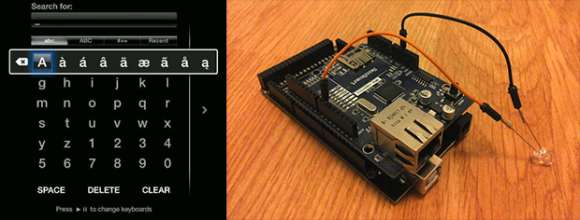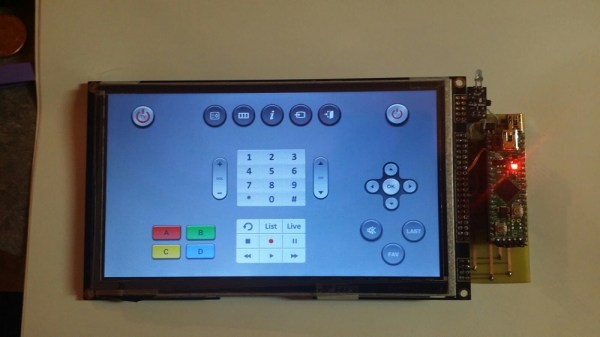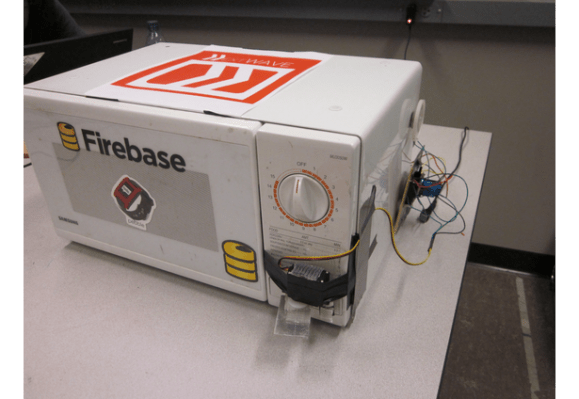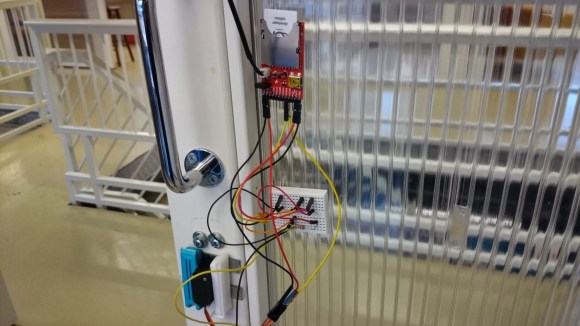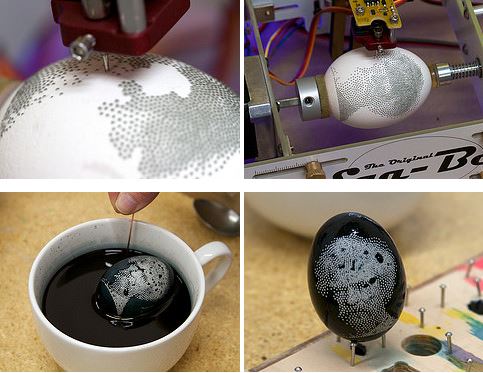
With Easter just around the corner, [Windell and Lenore] over at Evil Mad Scientist Laboratories have come out with a new upgrade for their Egg-Bot. It’s called the Electro-Kistka and it allows your Egg-Bot to do wax-resist egg dying — in the same style as Ukranian Pysanky.
This isn’t the first time someone’s strapped a kistka to an Egg-Bot, but after seeing how much fun their customers were having, [Windell and Lenore] decided to make their own. It consists of two main components, a heater assembly that attaches to the Egg-Bot’s arm, and a power control board. To apply the wax they are using a kistka tip (looks like a soldering iron tip with a hole through it) which feeds molten wax onto the egg through capillary action.
It works almost exactly the same as the regular Egg-Bot arm, but allows you to dye your eggs with a very stark contrast as the wax repels dye perfectly. Just take a look at the following intricate designs.






